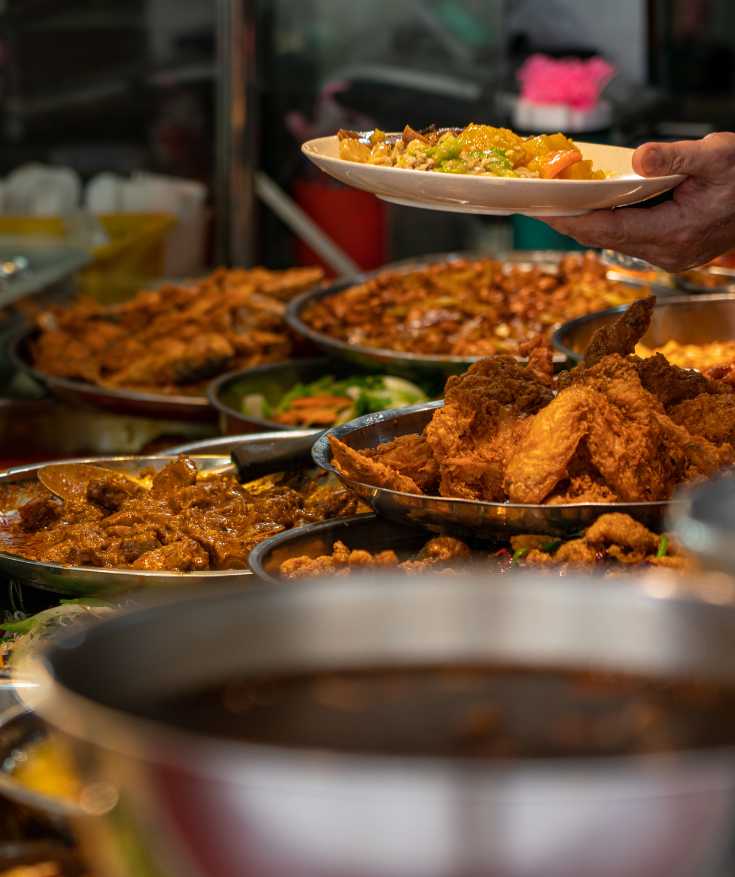Destinations > Asia > Singapore

👋 Hey there! My name is Trisha, and I travel and lead group tours to Singapore every year. In this Singapore travel guide, I will share everything I know about Singapore travel, including budget, things to do, cheap flights, affordable accommodations, what to avoid, and more!
Singapore, a bustling city-state in Southeast Asia, is a melting pot of cultures and a dynamic travel destination that offers a diverse range of experiences for visitors. Known for its modern skyline, impeccable cleanliness, and efficient public transportation system, Singapore blends the old and the new, with historic neighborhoods and traditional markets coexisting alongside futuristic architecture and world-class attractions.
From the iconic Marina Bay Sands and Gardens by the Bay to the vibrant enclaves of Chinatown and Little India, the city’s rich cultural heritage and mouthwatering cuisine make it an unforgettable destination for travelers of all ages and interests.
Singapore is worth visiting for its unique cultural, history, and modernity blend. The city offers many attractions, including world-class shopping, dining, entertainment, stunning parks, gardens, and museums. With its diverse population, Singapore is also an excellent destination for experiencing various cultural influences through its vibrant neighborhoods, festivals, and local cuisine.
Singapore’s central location in Southeast Asia also makes it an ideal hub for exploring other regional countries, such as Malaysia, Indonesia, and Thailand. Singapore’s rich tapestry of experiences, warm hospitality, and top-notch infrastructure make it a must-visit destination for any traveler.
🇸🇬 Singapore Travel Guide: quick info
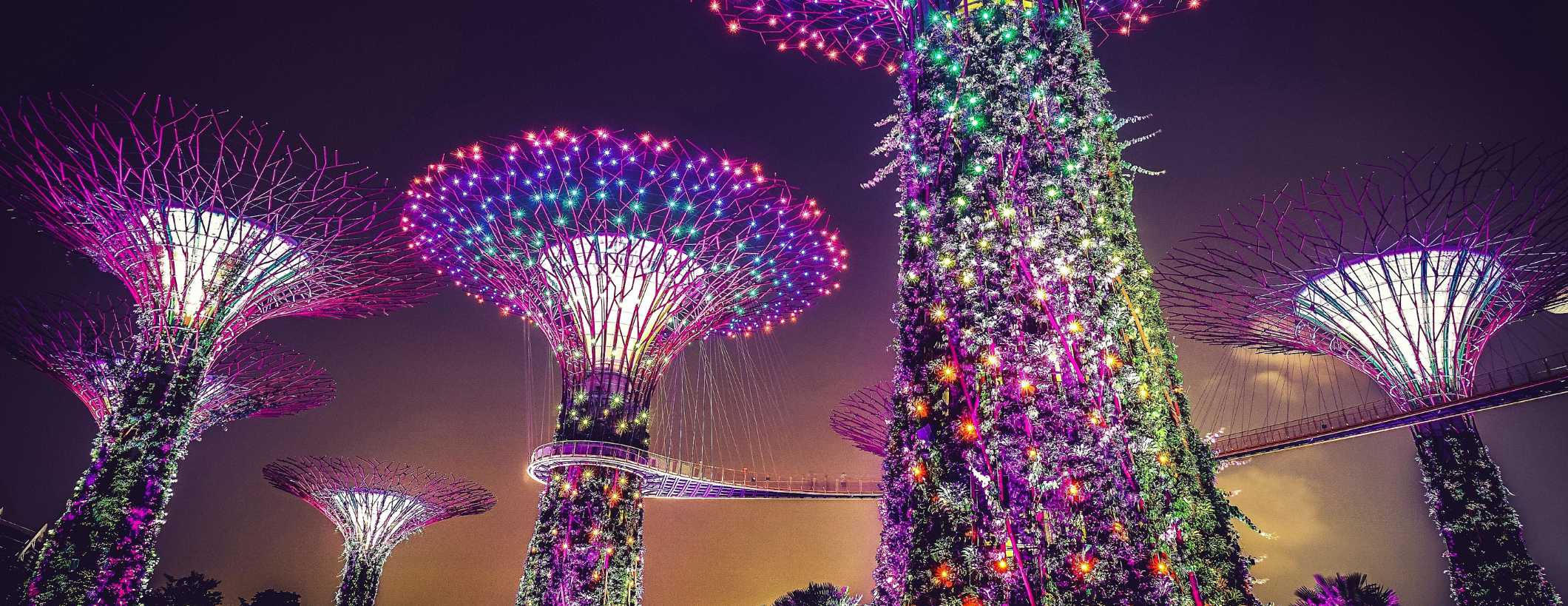

Currency
The currency in Singapore is the Singapore Dollar, abbreviated as SGD or S$. It is the official currency of Singapore and is commonly represented by the symbol “$” or “S$” to differentiate it from other dollar-based currencies.
Power Plug
In Singapore, the power plugs and sockets are of type G. This type of plug has three rectangular pins in a triangular pattern. The standard voltage in Singapore is 230 volts, and the frequency is 50 Hz. If your device or appliance is not compatible with this type of plug or the voltage and frequency, you may need a power adapter and/or a voltage converter to use it in Singapore.
Visa
Whether or not you need a visa to visit Singapore depends on your nationality and the length of your stay. Citizens of many countries, including the United States, Canada, Australia, the United Kingdom, and many EU countries, do not need a visa to enter Singapore for short-term stays of up to 90 days.
However, some nationalities require a visa to enter Singapore, while others may be eligible for a visa waiver or visa-on-arrival. You can check your specific visa requirements on the website of the Immigration & Checkpoints Authority of Singapore.
It is important to note that even if you do not require a visa to enter Singapore, you will still need to meet certain entry requirements, such as having a valid passport with at least six months validity, a return or onward ticket, and proof of sufficient funds to support your stay in Singapore.
Wifi
Singapore is a highly connected city-state with excellent internet infrastructure, making it easy for visitors to stay connected and access the internet while traveling. Most hotels, hostels, cafes, and public areas offer free Wi-Fi access. Many public Wi-Fi hotspots are available throughout the city, including at major tourist attractions, MRT stations, and public libraries. Visitors can connect to the “Wireless@SG” network to access these hotspots and register with their mobile number and email address.
For those who require a faster and more reliable internet connection, mobile data plans are widely available through local telecom providers such as Singtel, Starhub, and M1. Visitors can purchase prepaid SIM cards at the airport or local convenience stores and top up as needed for data usage.
Additionally, visitors can rent portable Wi-Fi devices, commonly known as pocket Wi-Fi or travel Wi-Fi, which offer a convenient and affordable way to stay connected while on the go. These devices can be rented from various providers online or at the airport and used with multiple devices.
Language
Singapore is a multicultural society with four official languages: English, Malay, Mandarin Chinese, and Tamil. English is widely spoken and understood throughout the country and is the primary language of business, education, and government. Malay is the national language used in official documents and proceedings, while Mandarin Chinese and Tamil are also commonly spoken and taught in schools as second languages. Additionally, the country’s diverse population has led to the development of a unique local language called Singlish, which combines elements of English, Malay, Mandarin, Tamil, and other dialects.
English is widely spoken in Singapore and is the primary language of communication in business, education, and government. Singapore’s colonial history, which saw the country under British rule for over a century, contributed significantly to the spread of the English language. Today, most Singaporeans are bilingual and proficient in English and one of the other official languages. Visitors to Singapore should have no problem communicating in English with locals, and signs, menus, and other official documents are typically available in both English and other official languages.
Safety
Singapore is considered one of the safest countries in the world, with low crime levels and a strong emphasis on law and order. The city-state has a well-developed police force, and the government takes a tough stance on crime, with strict penalties for offenses such as drug trafficking and vandalism.
Singapore is also known for its cleanliness, efficient public transportation system, and well-maintained infrastructure, all contributing to a safe and pleasant environment for visitors. The city-state has an excellent healthcare system and emergency services, and visitors can feel secure knowing that help is readily available if needed.
However, like any destination, visitors to Singapore should exercise common sense and take necessary precautions to stay safe, such as avoiding dark or secluded areas at night, being aware of their surroundings, and keeping valuables secure. Additionally, visitors should be mindful of local laws and regulations, such as the strict penalties for drug offenses, which are enforced rigorously in Singapore.
🗺️ Singapore Map
✨ Singapore travel tips for first-timers


- Visit Hawker Centres: Singapore is famous for its diverse and delicious street food. Be sure to visit hawker centres like Maxwell Food Centre, Lau Pa Sat, or Tiong Bahru Market for an authentic and affordable food experience.
- Carry an Umbrella: Singapore’s weather can be unpredictable, with sudden rain showers. Pack a small, foldable umbrella in your bag to be prepared for the tropical weather.
- Use Public Transport: The Mass Rapid Transit (MRT) system is efficient, clean, and budget-friendly. Purchase an EZ-Link card or a Singapore Tourist Pass for convenient and unlimited travel on public transport.
- Adhere to Local Laws: Singapore is known for its strict laws, such as no littering, no chewing gum, and no smoking in public places. Familiarize yourself with these laws and respect them to avoid fines.
- Explore Ethnic Neighborhoods: Experience the diverse cultures in Singapore by visiting ethnic neighborhoods like Little India, Chinatown, and Kampong Glam.
- Visit during Festivals: Time your visit to coincide with popular local festivals like Chinese New Year, Deepavali, Hari Raya Puasa, or the Mid-Autumn Festival for a unique cultural experience.
- Enjoy Green Spaces: Despite its urban landscape, Singapore has several parks and nature reserves. Visit the Singapore Botanic Gardens, Gardens by the Bay, or MacRitchie Reservoir for a relaxing break from the city.
- Dress Appropriately: Singapore’s weather is hot and humid, so opt for light, breathable clothing. However, carry a light jacket or shawl as many indoor places have strong air conditioning.
- Tap Water is Safe: Save money and reduce plastic waste by refilling your water bottle, as tap water in Singapore is safe to drink.
- Take Advantage of Free Attractions: Many attractions in Singapore are free or have minimal entry fees, such as the Singapore Botanic Gardens, the ArtScience Museum’s public spaces, or the National Gallery Singapore.
- Understand Tipping Culture: Tipping is not customary in Singapore, and service charges are often included in the bill. However, you can tip taxi drivers or hotel staff if you appreciate their service.
- Keep an Eye on Promotions: Look for promotions and discounts on popular attractions, such as the Universal Studios Singapore or the Singapore Flyer, on their websites or through travel apps.
- Visit Lesser-Known Islands: Escape the city and explore the lesser-known islands like Pulau Ubin, St. John’s Island, or Kusu Island for a more tranquil experience.
- Explore Singapore’s Art Scene: Discover Singapore’s thriving art scene by visiting galleries, street art spots in Haji Lane, or attending art events like Singapore Art Week.
- Be Mindful of the Local Customs: Show respect for local customs and traditions, such as removing your shoes before entering a home or a place of worship, and not touching someone’s head, which is considered sacred in some cultures.
Let me help you plan your trip to Singapore!
I have been traveling to Singapore for the last 10 years and have hosted trips and tours in Singapore. Let’s talk on the phone and plan your Singapore travel!
📅 Weather in Singapore by month


January in Singapore
January is considered the peak of the Northeast Monsoon season in Singapore, typically from November to early March. During this time, visitors can expect cool and breezy weather, with temperatures ranging from 23°C to 31°C (73°F to 88°F) and humidity levels hovering around 80%. While rainfall is expected during this season, it typically comes in short, intense bursts rather than prolonged periods of rain. Visitors should pack light, breathable clothing, comfortable walking shoes, and a light jacket or sweater for cooler evenings.
January is a vibrant month for events and festivals in Singapore, with plenty of opportunities to experience the city’s diverse cultures and traditions. One of the most significant events is Chinese New Year, which typically falls in late January or early February and is celebrated with colorful parades, lion and dragon dances, and traditional food and activities. Other notable events in January include the Light to Night Festival, which transforms cultural institutions and historic landmarks into a vibrant art playground, and Art Stage Singapore, an annual contemporary art fair showcasing the best Asian art scene.
Visitors can also enjoy Singapore Art Week, which features exhibitions, installations, and art-related activities across the city. Additionally, with comfortable temperatures and clear skies, January is a great time to enjoy outdoor activities like hiking, cycling, and watersports.
February in Singapore
February marks the end of the Northeast Monsoon season in Singapore, with the transition to the inter-monsoon season bringing warmer temperatures and higher humidity levels. Visitors can expect average temperatures to range from 24°C to 31°C (75°F to 88°F), with occasional rain showers and thunderstorms. The city’s lush greenery and gardens will be in full bloom, and visitors can enjoy outdoor activities like hiking and cycling, and watersports like kayaking and paddleboarding.
February is an exciting time to visit Singapore, with various cultural and sporting events occurring throughout the month. One of the most significant events is the Chingay Parade, a vibrant and colorful street parade featuring elaborate floats, dance performances, and fireworks. The annual i-Light Marina Bay festival also takes place in February, showcasing innovative and sustainable light installations and art installations across Marina Bay.
Another popular event is the Singapore Airshow, a biennial event featuring aviation displays, exhibitions, and conferences. Additionally, visitors can enjoy the Chinese Lantern Festival, which takes place on the 15th day of the Chinese New Year and features stunning lantern displays, performances, and food stalls. Sports enthusiasts can also catch the Singapore Tennis Open, an ATP Tour event featuring top-ranked players worldwide.
March in Singapore
March is part of Singapore’s inter-monsoon season, bringing warm temperatures and high humidity levels. The average temperature during this time ranges from 25°C to 32°C (77°F to 90°F), and visitors can expect occasional rainfall and thunderstorms. While the weather can be hot and humid, it also offers opportunities for outdoor activities, such as beach outings, water sports, and exploring the city’s parks and gardens.
March is an exciting month for events and festivals in Singapore, with various cultural, sports, and entertainment events occurring throughout the month. One of the biggest events is the HSBC Women’s World Championship, a prestigious golf tournament that brings together top-ranked players worldwide. The Singapore Festival of Fun, held in Clarke Quay, offers visitors a range of family-friendly activities, including street performances, carnival rides, and games.
Another popular event is the Singapore International Jazz Festival, featuring world-renowned jazz musicians performing at multiple venues across the city. Visitors can also enjoy Singapore Design Week, showcasing the best of local and international design through exhibitions, installations, and workshops. In addition, visitors can participate in the annual St. Patrick’s Day celebrations, featuring lively parades, music, and plenty of Irish beer.
April in Singapore
April is part of Singapore’s inter-monsoon season, bringing warm temperatures and high humidity. The average temperature during this time ranges from 25°C to 32°C (77°F to 90°F), with occasional rainfall and thunderstorms. Visitors can expect plenty of sunshine and warm weather, making it a great time to enjoy outdoor activities such as exploring the city’s parks, beaches, and water sports.
April is a fantastic month to visit Singapore, with various cultural and sporting events occurring throughout the month. One of the most significant events is the Singapore International Festival of Arts, which showcases multiple performances and exhibitions worldwide, including theatre, dance, music, and visual arts. The Singapore Heritage Festival also takes place in April, featuring guided tours, workshops, and events celebrating the city’s rich cultural heritage.
For food lovers, the World Gourmet Summit brings together top chefs and food experts for a series of culinary events and dining experiences. Sports enthusiasts can also catch the Singapore Rugby Sevens, an annual international rugby tournament featuring teams worldwide. Additionally, visitors can enjoy the annual Singapore International Jazz Festival, featuring world-renowned jazz musicians performing at multiple venues across the city.
May in Singapore
May marks the beginning of Singapore’s inter-monsoon season, bringing warm temperatures and high humidity. The average temperature during this time ranges from 25°C to 32°C (77°F to 90°F), with occasional rainfall and thunderstorms. Visitors can expect plenty of sunshine and warm weather, making it a great time to enjoy outdoor activities such as exploring the city’s parks, beaches, and water sports.
May is a fantastic month to visit Singapore, with various cultural and sporting events occurring throughout the month. One of the most significant events is Vesak Day, a Buddhist holiday commemorating Buddha’s birth, enlightenment, and death. Visitors can join in the celebrations at local temples, where offerings, prayers, and processions occur.
Another popular event is the Great Singapore Sale, an annual shopping extravaganza offering discounts and deals at major shopping centers and boutiques across the city. For art lovers, the Affordable Art Fair Singapore showcases affordable contemporary art from local and international artists. The Singapore International Festival of Arts also continues in May, offering visitors diverse performances and exhibitions worldwide.
Sports enthusiasts can also catch the FINA Swimming World Cup, featuring top-ranked swimmers worldwide competing in various events.
June in Singapore
June marks the beginning of the Southwest Monsoon season in Singapore, which brings increased rainfall and slightly cooler temperatures. The average temperature during this time ranges from 25°C to 31°C (77°F to 88°F), with occasional rain showers and thunderstorms. Visitors can still expect warm and humid weather, making it a great time to enjoy indoor attractions such as museums, galleries, and shopping malls.
June is a great month to experience Singapore’s vibrant culture and traditions, with various festivals and events occurring throughout the month. One of the most significant events is Hari Raya Aidilfitri, a Muslim holiday marking the end of Ramadan. Visitors can join in the festivities at local mosques, where traditional Malay food, music, and dances are showcased. Another major event is the Dragon Boat Festival, which features thrilling boat races and cultural performances in the Marina Bay area.
For music lovers, the Ultra Singapore Music Festival brings together top DJs and performers worldwide for a weekend of electronic dance music. Additionally, visitors can enjoy Singapore Art Week, which features exhibitions, installations, and art-related activities across the city. Sports enthusiasts can also catch the Singapore National Olympic Council’s Olympic Day Run, an annual event promoting the Olympic values of friendship, excellence, and respect.
July in Singapore
July is part of Singapore’s Southwest Monsoon season, bringing increased rainfall and slightly cooler temperatures. The average temperature during this time ranges from 25°C to 31°C (77°F to 88°F), with occasional rain showers and thunderstorms. While the weather can be unpredictable, visitors can still expect warm and humid conditions, making it a great time to explore indoor attractions such as museums, galleries, and shopping malls.
July is a vibrant month for events and festivals in Singapore, with various cultural, sports, and entertainment events taking place throughout the month. One of the most significant events is the Singapore Food Festival, a celebration of the city’s diverse food culture, featuring food tastings, cooking demonstrations, and culinary workshops. Visitors can also enjoy the annual Singapore Garden Festival, showcasing the best of local and international gardening and landscape design.
For sports enthusiasts, the HSBC Singapore Rugby Sevens brings together top-ranked rugby teams worldwide for a weekend of thrilling matches and entertainment. The Singapore International Film Festival also features diverse films worldwide, including award-winning international and regional productions.
July is also a great time to experience Singapore’s arts and music scene, with the annual Baybeats music festival and the Singapore Art Week offering visitors a range of exhibitions, installations, and performances.
August in Singapore
August is part of Singapore’s Southwest Monsoon season, bringing increased rainfall and slightly cooler temperatures. The average temperature during this time ranges from 25°C to 31°C (77°F to 88°F), with occasional rain showers and thunderstorms. While the weather can be unpredictable, visitors can still expect warm and humid conditions, making it a great time to explore indoor attractions such as museums, galleries, and shopping malls.
August is a fantastic time to visit Singapore, with various cultural, sports, and entertainment events occurring throughout the month. One of the most significant events is the National Day Parade, which celebrates Singapore’s independence with a massive display of fireworks, parades, and cultural performances. Visitors can also enjoy the Singapore Night Festival, a yearly event transforming the Bras Basah-Bugis precinct into a magical wonderland with light installations, art exhibitions, and performances.
For music lovers, the Baybeats music festival brings together indie and alternative bands from Singapore and worldwide for a weekend of live music. Additionally, visitors can enjoy the Singapore International Festival of Arts, which features various performances and exhibitions worldwide, including theater, dance, music, and visual arts.
August is also a great time to experience Singapore’s vibrant food scene. The annual Singapore Street Food Festival allows visitors to sample some of the city’s most delicious street food.
September in Singapore
September is part of Singapore’s inter-monsoon season, bringing warm temperatures and high humidity. The average temperature during this time ranges from 25°C to 31°C (77°F to 88°F), with occasional rain showers and thunderstorms. Visitors can expect plenty of sunshine and warm weather, making it a great time to enjoy outdoor activities such as exploring the city’s parks, beaches, and water sports.
Paragraph 2: September is a great month to visit Singapore, with various cultural, sports, and entertainment events occurring throughout the month. One of the most significant events is the Mid-Autumn Festival, also known as the Mooncake Festival, which features colorful lantern displays, traditional food and activities, and mooncake tastings. Visitors can also enjoy the Singapore Grand Prix, a thrilling Formula One race on a street circuit in the city’s heart.
For music lovers, the annual Neon Lights music festival features a diverse lineup of international and local acts across multiple stages. Additionally, visitors can experience Singapore’s vibrant arts scene with the Singapore International Festival of Arts, which showcases a range of performances, exhibitions, and workshops from local and international artists.
September is also a great time to explore Singapore’s museums and galleries, with the annual Museum Open House offering free admission to multiple museums and galleries across the city.
October in Singapore
October is part of Singapore’s inter-monsoon season, bringing warm temperatures and high humidity. The average temperature during this time ranges from 24°C to 31°C (75°F to 88°F), with occasional rain showers and thunderstorms. Visitors can expect plenty of sunshine and warm weather, making it a great time to enjoy outdoor activities such as exploring the city’s parks, beaches, and water sports.
October is a fantastic month to visit Singapore, with a range of cultural, sports, and entertainment events taking place throughout the month. One of the most significant events is the Deepavali Festival, also known as the Festival of Lights, which celebrates the victory of light over darkness with colorful decorations, traditional food, and cultural performances. Visitors can also enjoy the annual Singapore International Film Festival, featuring a diverse selection of films from around the world, including award-winning international and regional productions.
For music lovers, the annual Music Matters Live festival showcases emerging and established bands from Singapore and worldwide. Additionally, visitors can experience Singapore’s vibrant arts scene with the Singapore Biennale, which features contemporary art exhibitions, installations, and performances from local and international artists.
October is also a great time to explore Singapore’s culinary offerings, with the World Gourmet Summit offering food tastings, culinary workshops, and events featuring top chefs and restaurants worldwide.
November in Singapore
November is part of Singapore’s Northeast Monsoon season, bringing cooler temperatures and occasional rain showers. The average temperature during this time ranges from 23°C to 30°C (73°F to 86°F), with lower humidity levels than in other months. Visitors can still expect warm and humid conditions, making exploring indoor attractions such as museums, galleries, and shopping malls a great time.
Paragraph 2: November is a great month to visit Singapore, with various cultural, sports, and entertainment events occurring throughout the month. One of the most significant events is the Singapore International Film Festival, featuring a diverse selection of films from around the world, including award-winning international and regional productions. Visitors can enjoy the annual Wine and Dine Festival, showcasing top restaurants, wineries, and breweries worldwide.
For sports enthusiasts, the WTA Finals Singapore brings together the top-ranked women’s tennis players for a week of thrilling matches and entertainment. Additionally, visitors can experience Singapore’s vibrant arts scene with the Singapore Writers Festival, which features book launches, workshops, and talks by local and international writers.
November is also a great time to explore Singapore’s parks and gardens. The annual Singapore Garden Festival offers visitors a chance to experience the best of local and international gardening and landscape design.
December in Singapore
December is part of Singapore’s Northeast Monsoon season, bringing cooler temperatures and occasional rain showers. The average temperature during this time ranges from 23°C to 30°C (73°F to 86°F), with lower humidity levels than in other months. Visitors can still expect warm and humid conditions, making exploring indoor attractions such as museums, galleries, and shopping malls a great time.
December is a fantastic time to visit Singapore, with various cultural, sports, and entertainment events occurring throughout the month. One of the most significant events is Christmas, with many shopping centers and hotels putting up spectacular decorations and light displays. Visitors can also enjoy the Christmas Wonderland at Gardens by the Bay, a magical wonderland featuring festive decorations, light installations, and entertainment.
For music lovers, the ZoukOut music festival brings together top DJs and performers worldwide for a weekend of electronic dance music. Additionally, visitors can experience Singapore’s vibrant arts scene with the Singapore International Film Festival, featuring a diverse selection of films from around the world, including award-winning international and regional productions.
December is also a great time to explore Singapore’s culinary offerings. The annual Singapore Food Festival offers food tastings, cooking demonstrations, and culinary workshops showcasing the city’s diverse food culture.
☀️ Best time to visit Singapore by season


Northeast Monsoon Season (December-early March)
The Northeast Monsoon season in Singapore occurs from December to early March, bringing cooler temperatures and occasional rain showers to the city-state. During this period, the weather is characterized by lower humidity levels, with temperatures ranging from 23°C to 30°C (73°F to 86°F). While the weather can be unpredictable, visitors can still expect warm and humid conditions, making it a great time to explore indoor attractions such as museums, galleries, and shopping malls.
Despite the cooler weather, visitors can still enjoy outdoor activities such as exploring Singapore’s parks and gardens and participating in water sports and outdoor adventures. However, it is essential to be prepared for the occasional rain showers, which can sometimes be heavy.
Inter-monsoon Period (Late March-May)
The Inter-monsoon period in Singapore occurs from late March to May, bringing warm temperatures and high humidity levels to the city-state. During this time, the weather is characterized by occasional rain showers and thunderstorms, with temperatures ranging from 25°C to 31°C (77°F to 88°F). Visitors can expect plenty of sunshine and warm weather, making it a great time to enjoy outdoor activities such as exploring the city’s parks, beaches, and water sports.
Despite the warm and humid conditions, visitors can still explore Singapore’s indoor attractions such as museums, galleries, and shopping malls. Additionally, this period is a great time to experience Singapore’s diverse food culture, with a range of culinary events and food festivals taking place throughout the season.
It is important to be prepared for the occasional rain showers and thunderstorms during the inter-monsoon period, which can occur in the late afternoon or early evening. Visitors are advised to bring along an umbrella or rain jacket, and plan indoor activities during times of heavy rainfall.
Southwest Monsoon season (June to September)
The Southwest Monsoon season in Singapore occurs from June to September, bringing increased rainfall and slightly cooler temperatures to the city-state. During this time, the weather is characterized by occasional rain showers and thunderstorms, with temperatures ranging from 25°C to 31°C (77°F to 88°F). Visitors can expect warm and humid conditions, making exploring indoor attractions such as museums, galleries, and shopping malls a great time.
Despite the increased rainfall, visitors can still enjoy outdoor activities such as exploring Singapore’s parks and gardens and participating in water sports and outdoor adventures. However, it is essential to be prepared for the occasional heavy rain showers and thunderstorms, which can occur in the late afternoon or early evening.
The Southwest Monsoon season is also a great time to experience Singapore’s cultural events and festivals, including the National Day Parade in August, which celebrates Singapore’s independence with a massive display of fireworks, parades, and cultural performances. Visitors can also enjoy the Singapore Night Festival, the Baybeats music festival, and the Singapore International Festival of Arts during this season.
Inter-monsoon Period (October to November)
The Inter-monsoon period in Singapore occurs from October to November, bringing warm temperatures and high humidity levels to the city-state. During this time, the weather is characterized by occasional rain showers and thunderstorms, with temperatures ranging from 24°C to 31°C (75°F to 88°F). Visitors can expect plenty of sunshine and warm weather, making it a great time to enjoy outdoor activities such as exploring the city’s parks, beaches, and water sports.
Despite the warm and humid conditions, visitors can still explore Singapore’s indoor attractions, such as museums, galleries, and shopping malls. Additionally, this period is a great time to experience Singapore’s diverse food culture, with various culinary events and festivals throughout the season.
It is essential to be prepared for the occasional rain showers and thunderstorms during the inter-monsoon period, which can occur late afternoon or early evening. Visitors are advised to bring along an umbrella or rain jacket, and plan indoor activities during times of heavy rainfall.
The Inter-monsoon period is also a great time to experience Singapore’s cultural events and festivals, including the Deepavali Festival in October, which celebrates the Hindu festival of lights with colorful decorations, traditional food, and cultural performances. Visitors can also enjoy this season’s Singapore International Film Festival and the Wine and Dine Festival.
🚍 Singapore Transportation Guide
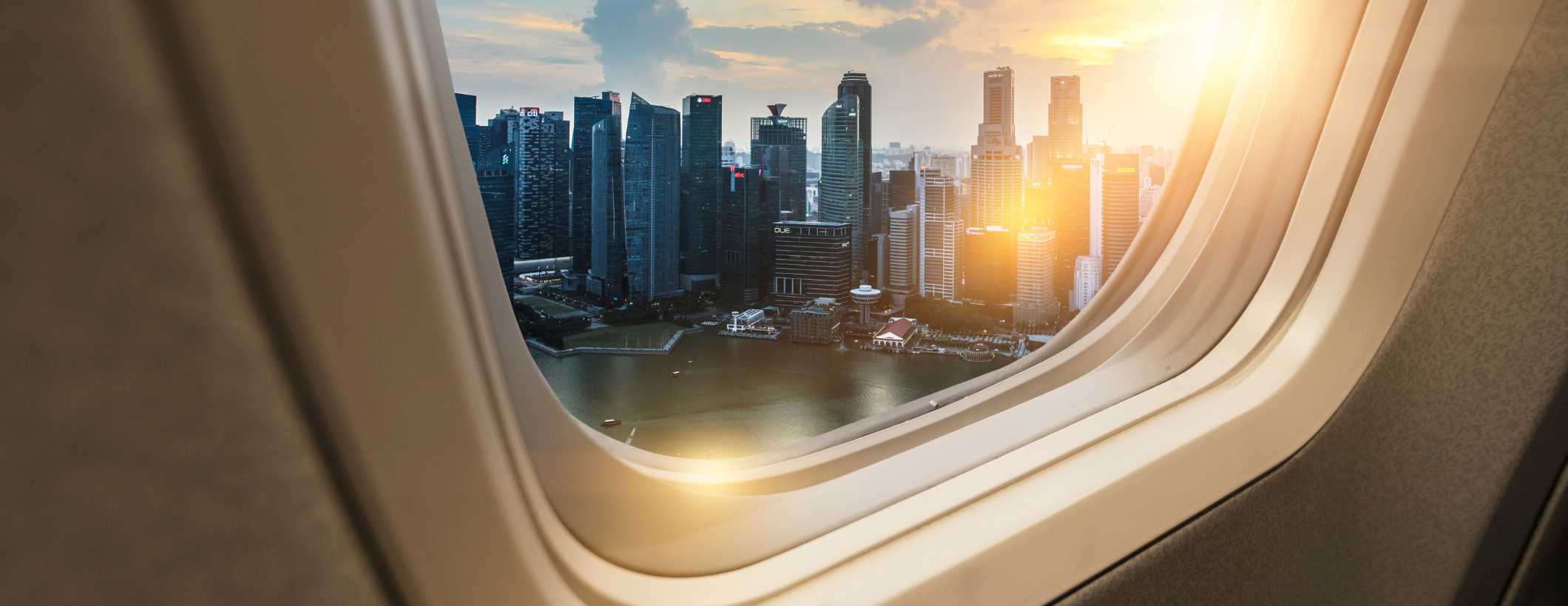

- Mass Rapid Transit (MRT): Singapore’s efficient and extensive MRT system is the quickest and most convenient way to get around the city. It covers most major attractions and residential areas, with frequent trains and clear signage in English.
- Buses: Singapore’s extensive bus network complements the MRT, connecting various parts of the city with frequent services. Bus stops are well-marked, and buses are air-conditioned, making them a comfortable and budget-friendly option.
- Taxis: Taxis are widely available in Singapore, offering a convenient way to get around, especially to areas not serviced by the MRT. Taxi stands are located at malls, hotels, and attractions, or you can hail a taxi on the street.
- Ride-hailing Apps: Services like Grab and Gojek provide app-based taxi and private car booking options in Singapore, often at competitive rates compared to traditional taxis.
- Biking: Singapore is increasingly becoming bike-friendly, with dedicated bike lanes and bike-sharing services like SG Bike available in various locations. Biking can be an enjoyable and eco-friendly way to explore the city.
- Walking: Many attractions in Singapore are located within walking distance of each other, especially in areas like Marina Bay, Orchard Road, and Chinatown. Walking can be a pleasant way to explore the city, with well-maintained sidewalks and pedestrian crossings.
- Trishaws: For a unique and traditional mode of transportation, trishaws can be found in areas like Little India and Chinatown. These three-wheeled rickshaws are powered by a cyclist and offer a leisurely way to explore the local neighborhoods.
- River Taxis: Singapore’s river taxis, or bumboat services, provide a scenic way to travel along the Singapore River. Stops include popular attractions like Clarke Quay, Boat Quay, and Marina Bay.
- Cable Car: The Singapore Cable Car connects Mount Faber Park to Sentosa Island, offering panoramic views of the city skyline, harbor, and surrounding islands.
- E-scooters and Personal Mobility Devices (PMDs): E-scooters and other PMDs are available for rent in designated areas of Singapore. However, they are subject to strict regulations, such as speed limits and restricted zones, to ensure pedestrian safety.
Remember to purchase an EZ-Link card or a Singapore Tourist Pass for convenient and unlimited travel on public transport, including MRT and bus services.
Customized Singapore tours
I customize tours in Singapore for all traveler types! Get in touch with my office at +52 473 171 5259 via Whatsapp and get a quote. Simple prices, no hidden costs.
⛰️ Things to do in Singapore
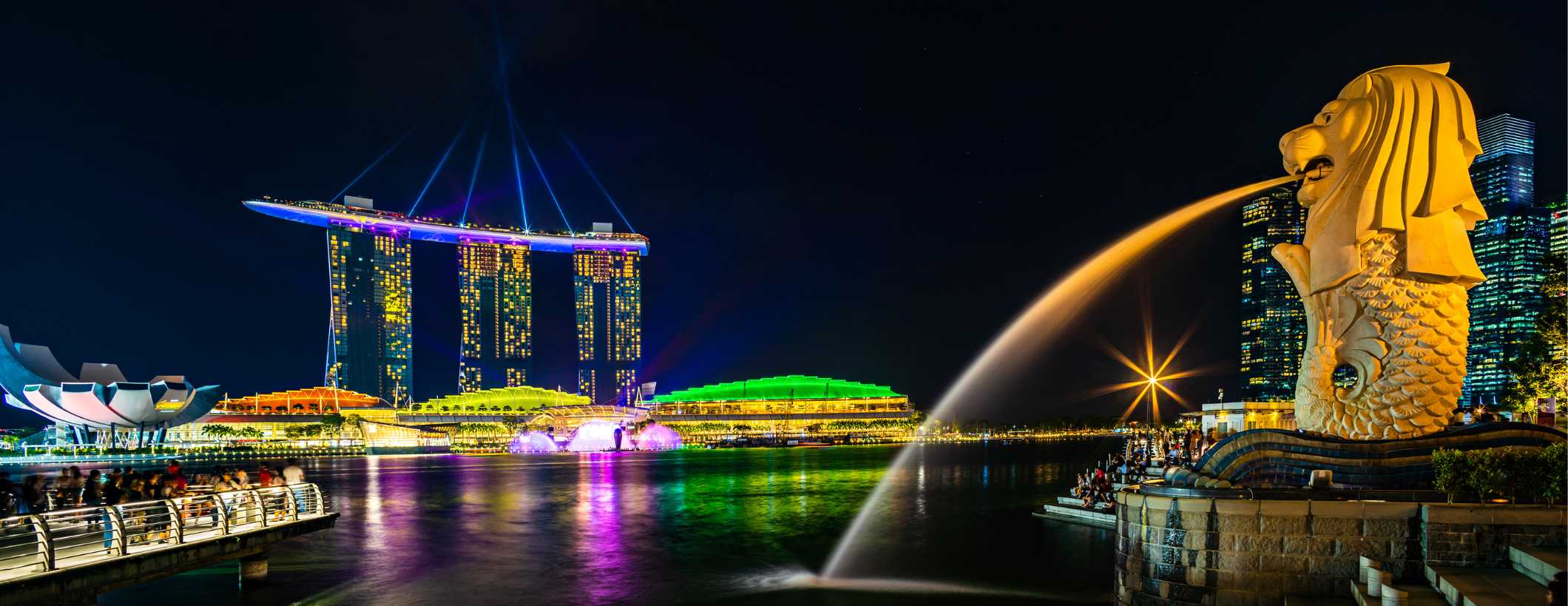

- Marina Bay Sands: This iconic integrated resort features a luxury hotel, shopping mall, casino, and convention center. The SkyPark Observation Deck offers stunning city views, and the nightly light show, Spectra, is a must-see.
- Gardens by the Bay: A futuristic urban park spanning 101 hectares, Gardens by the Bay features the iconic Supertree Grove, Flower Dome, and Cloud Forest conservatories. The nightly Garden Rhapsody light and sound show is a popular attraction.
- Sentosa Island: A popular leisure destination, Sentosa Island is home to attractions like Universal Studios Singapore, S.E.A. Aquarium, Adventure Cove Waterpark, and beautiful beaches.
- Singapore Zoo: Known for its open-concept design and natural habitats, Singapore Zoo houses over 2,800 animals from 300 species. Don’t miss the popular Night Safari, River Safari, and Jurong Bird Park.
- Orchard Road: A bustling shopping district, Orchard Road features a mix of high-end malls, department stores, and designer boutiques, making it a shopper’s paradise.
- Singapore Botanic Gardens: A UNESCO World Heritage Site, the 160-year-old Singapore Botanic Gardens is home to a vast collection of flora, including the National Orchid Garden.
- Merlion Park: Featuring the iconic Merlion statue, a mythical creature with a lion’s head and a fish’s body, Merlion Park is a popular spot for photo opportunities and offers stunning views of Marina Bay.
- Chinatown: Singapore’s historic Chinatown is a vibrant neighborhood filled with traditional shophouses, temples, and markets. Don’t miss the Buddha Tooth Relic Temple and the colorful Sri Mariamman Temple.
- Little India: This lively ethnic enclave offers a taste of Indian culture through its colorful streets, spice shops, and temples, like the Sri Veeramakaliamman Temple.
- Clarke Quay: A bustling riverside district, Clarke Quay features a mix of restaurants, bars, and clubs set in restored colonial-era warehouses along the Singapore River.
- Raffles Hotel: A historic luxury hotel, Raffles Hotel is famous for its colonial architecture and the iconic Singapore Sling cocktail, first created at the hotel’s Long Bar.
- ArtScience Museum: With its distinctive lotus-shaped architecture, the ArtScience Museum showcases interactive exhibitions that explore the intersection of art, science, and technology.
- National Gallery Singapore: Housed in the former City Hall and Supreme Court buildings, the National Gallery Singapore features the largest public collection of Southeast Asian art from the 19th century to the present day.
- Esplanade – Theatres on the Bay: Nicknamed “the Durian” due to its unique design, Esplanade is a performing arts center that hosts a wide range of theater, music, and dance performances.
- Asian Civilisations Museum: This museum showcases the diverse cultural heritage of Asia, with a focus on the ancestral cultures of Singapore’s multi-ethnic population.
- Singapore Flyer: This 165-meter-tall observation wheel offers panoramic views of the city skyline and surrounding areas, making it a popular spot for sightseeing and photography.
- Sultan Mosque: Located in Kampong Glam, the Sultan Mosque is Singapore’s largest mosque and features distinctive golden domes and a rich history dating back to 1824.
- MacRitchie Reservoir: A popular destination for nature lovers, MacRitchie Reservoir offers walking trails, kayaking opportunities, and the TreeTop Walk, a suspension bridge with stunning views of the forest canopy.
- Pulau Ubin: A rustic island off Singapore’s northeast coast, Pulau Ubin offers a glimpse of traditional village life.
🛏️ Singapore hotels and accommodations


Singapore offers various accommodation types, catering to different budgets and preferences. From luxurious hotels to budget-friendly hostels, visitors can easily find a comfortable and convenient place to stay in Singapore.
Luxury hotels in Singapore are some of the best in the world, with world-class amenities and breathtaking city views. Some of Singapore’s most famous luxury hotels include Marina Bay Sands, Raffles Hotel, and The Fullerton Hotel. These hotels offer a range of amenities, including swimming pools, spas, fine-dining restaurants, and fitness centers.
Singapore has a range of hostels, guesthouses, and budget hotels for those looking for a more budget-friendly option. These accommodations provide basic amenities, including clean and comfortable beds, shared bathrooms, and free Wi-Fi. Some popular budget-friendly options include Backpackers’ Inn Chinatown, Dream Lodge, and Beary Best! Hostel.
There are also many mid-range hotels in Singapore offering comfortable and convenient accommodations at a reasonable price. These hotels provide a range of amenities, including swimming pools, fitness centers, and free Wi-Fi. Some popular mid-range options include Holiday Inn Express Singapore Clarke Quay, ibis Styles Singapore on Macpherson, and Hotel Boss.
Serviced apartments are a great option for longer stays or more space and independence. These apartments provide a range of amenities, including fully-equipped kitchens, laundry facilities, and living rooms. Some popular serviced apartments in Singapore include Pan Pacific Serviced Suites Orchard, Citadines Fusionopolis Singapore, and Fraser Suites Singapore.
🍲 Singapore food: what to eat in Singapore
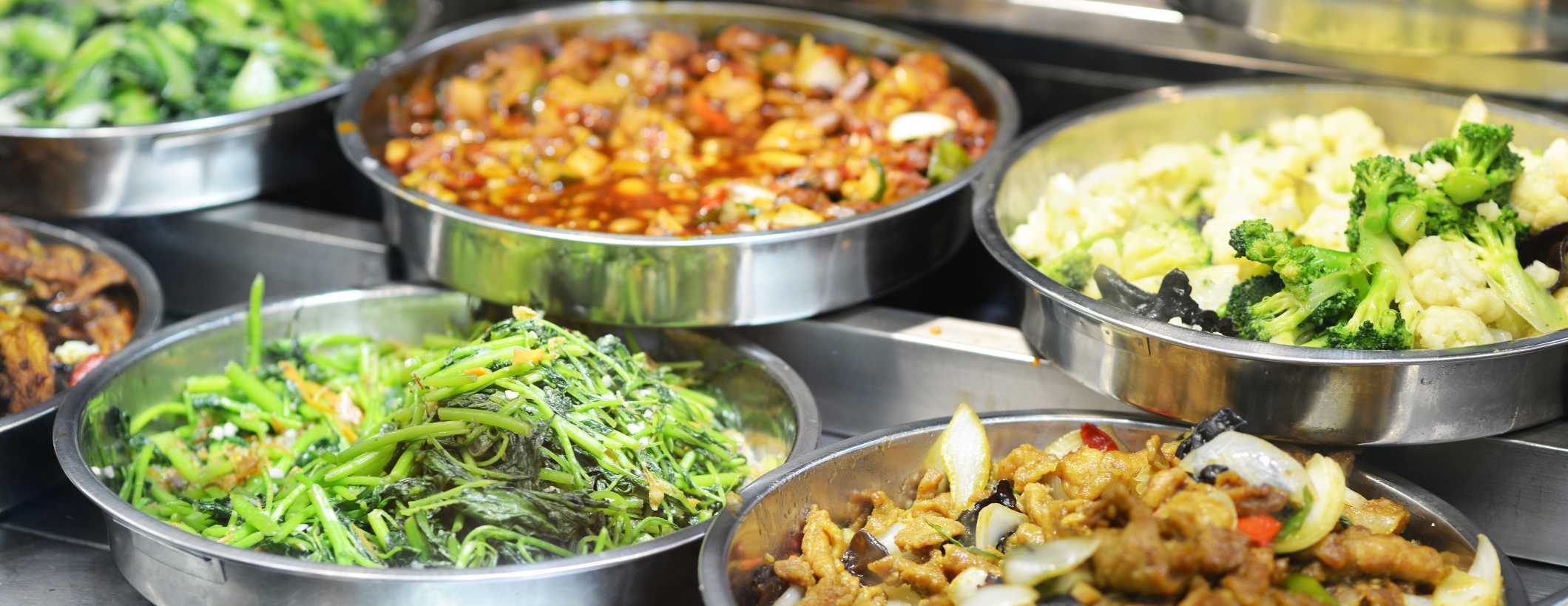

- Hainanese Chicken Rice: A popular Singaporean dish, Hainanese chicken rice features poached chicken served with fragrant jasmine rice cooked in chicken broth, garlic, and ginger. It is accompanied by dipping sauces such as chili, ginger, and dark soy sauce.
- Laksa: This spicy noodle soup combines Chinese and Malay flavors, featuring rice noodles in a rich, coconut milk-based curry broth, often served with prawns, fish cakes, bean sprouts, and fresh herbs.
- Chilli Crab: A signature Singaporean seafood dish, chilli crab features whole crabs cooked in a sweet, spicy, and tangy tomato-based sauce. It is typically served with fried mantou buns for dipping in the sauce.
- Nasi Lemak: A Malay rice dish, nasi lemak consists of fragrant coconut milk-infused rice served with various side dishes such as fried anchovies, roasted peanuts, cucumber slices, hard-boiled eggs, and spicy sambal.
- Roti Prata: An Indian-influenced flatbread, roti prata is a flaky, pan-fried bread served with a side of curry for dipping. It comes in various flavors, including plain, egg, onion, and sweet options like banana or chocolate.
- Char Kway Teow: A popular stir-fried noodle dish, char kway teow consists of flat rice noodles cooked with dark soy sauce, garlic, bean sprouts, chives, and a mix of ingredients such as prawns, fish cake, and Chinese sausage.
- Bak Kut Teh: Translating to “pork rib tea,” bak kut teh is a herbal soup made with pork ribs simmered in a broth of herbs and spices. It is commonly served with rice, fried dough sticks (you tiao), and a side of braised peanuts.
- Hokkien Mee: This noodle dish features a mix of yellow egg noodles and rice vermicelli stir-fried with prawns, squid, egg, bean sprouts, and a flavorful prawn-based broth.
- Satay: Satay consists of skewered and grilled meat, such as chicken, beef, or mutton, marinated in spices and served with a spicy peanut sauce, cucumber, onion, and ketupat (rice cakes).
- Kaya Toast: A popular Singaporean breakfast item, kaya toast consists of thinly sliced toasted bread filled with a sweet coconut and egg jam called kaya, often served with soft-boiled eggs and a cup of local coffee (kopi).
- Fish Head Curry: A unique Singaporean dish, fish head curry is made with a large fish head cooked in a tangy and spicy curry sauce with vegetables like okra and eggplant. It is typically served with steamed rice.
- Rojak: A traditional fruit and vegetable salad, rojak combines ingredients like pineapple, cucumber, bean sprouts, and dough fritters, tossed in a sweet and spicy shrimp paste-based dressing and garnished with crushed peanuts.
- Curry Puff: A popular Singaporean snack, curry puffs are deep-fried pastries filled with a spiced potato and chicken mixture, sometimes including a slice of hard-boiled egg.
- Popiah: A fresh spring roll, popiah features a thin wheat crepe filled with ingredients such as julienned vegetables, bean sprouts, grated peanuts, and sweet sauce. A fried version, called “fried popiah,” is also available.
- Ice Kacang: A popular dessert in Singapore, ice kacang consists of a mound of shaved ice topped with sweet syrup, evaporated milk, and various ingredients like red beans, sweet corn, grass
💲 Singapore trip costs
Hotel prices
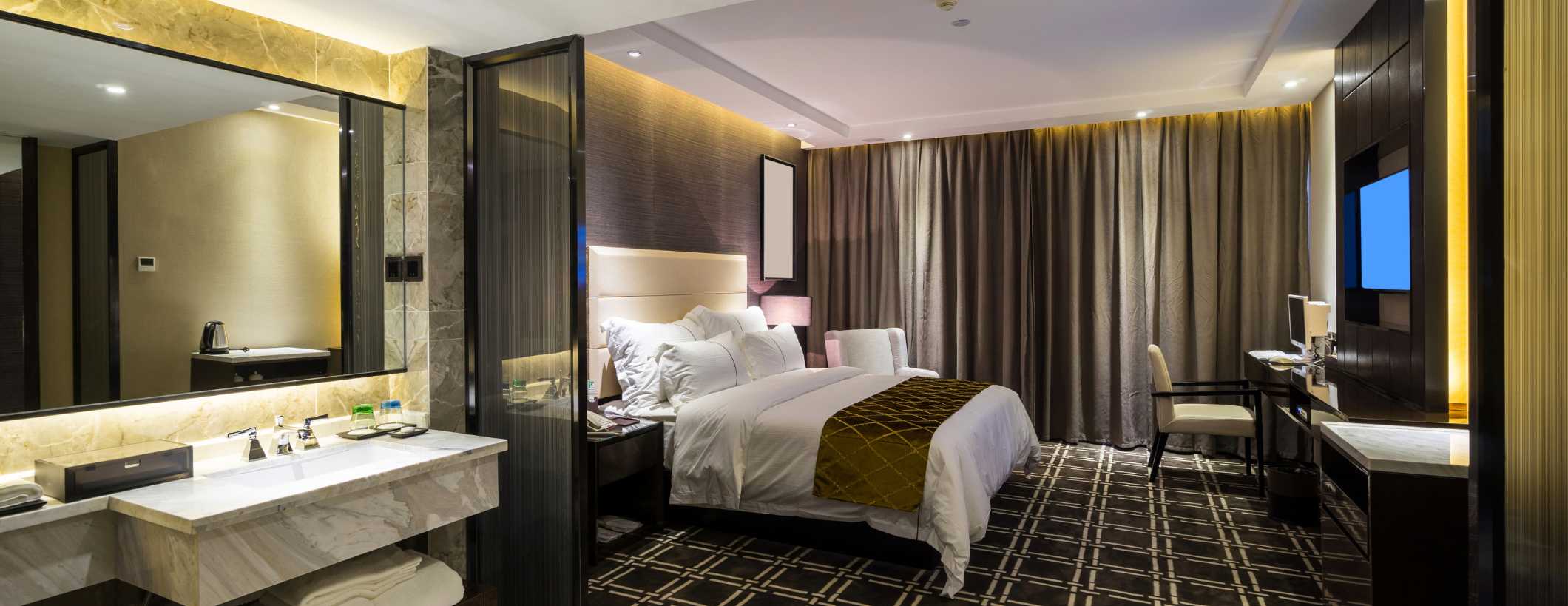

Accommodation prices in Singapore can vary greatly depending on the accommodation type, location, and season. Luxury hotels in prime locations can cost upwards of several hundred dollars per night, while budget-friendly hostels and guesthouses can cost as little as $20-30 USD per night.
The accommodation cost in Singapore is higher than in many other Southeast Asian countries due to its status as a global financial and tourism hub. However, budget-conscious travelers still have affordable options, particularly in outlying neighborhoods or less expensive accommodations such as hostels or budget hotels. It is also worth noting that prices can vary greatly depending on the time of year, with peak season (typically around major holidays or events) commanding higher prices. Overall, visitors to Singapore can expect to find a wide range of accommodation options at various price points, with plenty of opportunities to suit every budget and preference.
Food prices
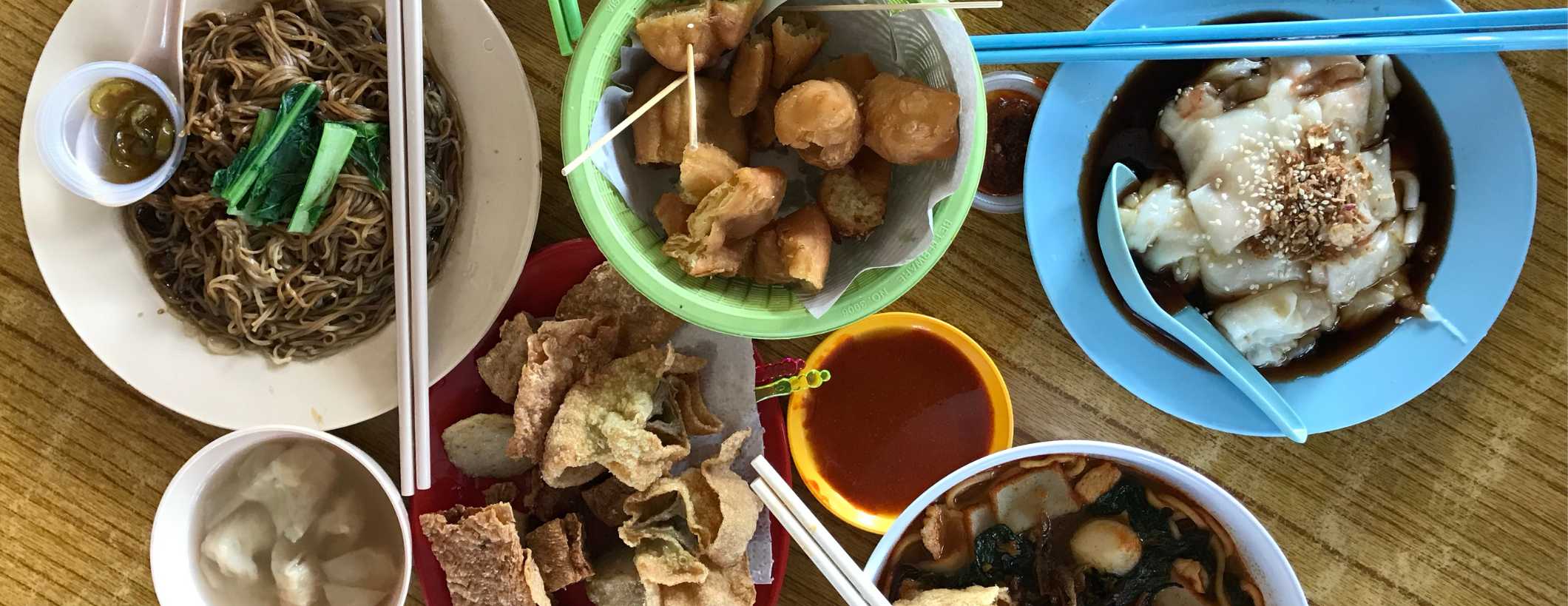

Food prices in Singapore can vary greatly depending on the type of food and the dining experience. Eating at high-end restaurants can cost several hundred dollars per person, while street food and hawker centers offer affordable options for budget-conscious travelers.
Hawker centers are a popular choice for locals and visitors, offering various affordable and delicious dishes from different cultures. The average price for a meal at a hawker center ranges from $3 to $10 USD, with options including local favorites such as Hainanese chicken rice, laksa, and char kway teow. However, prices vary depending on the hawker center’s location and the stall’s popularity.
For those looking for a more upscale dining experience, Singapore has a thriving restaurant scene with a range of options from fine dining to casual restaurants. Prices for meals at high-end restaurants can range from $50 to $200 USD or more per person, depending on the restaurant and menu. In general, international cuisine tends to be more expensive than local food in Singapore.
Attraction and tour costs
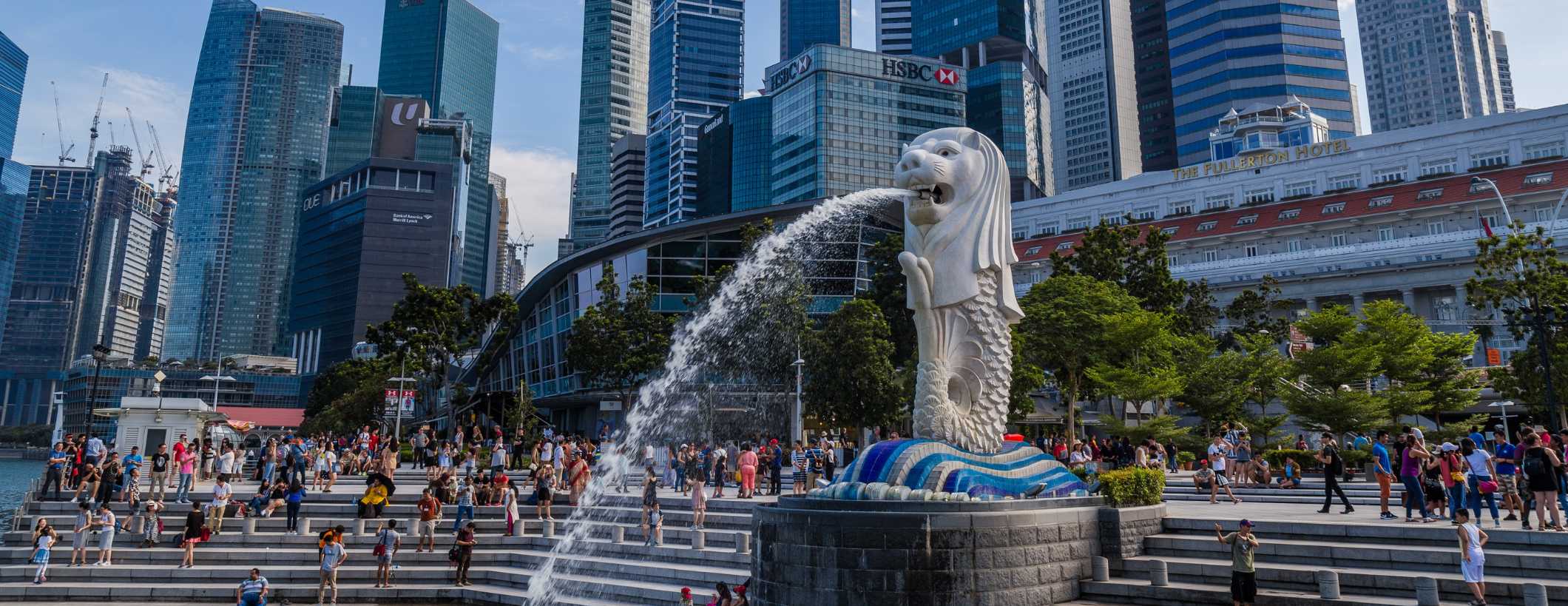

Tour and excursion prices in Singapore can vary greatly depending on the type of activity and duration of the tour. Many tours and excursions are available, including walking tours, city tours, and adventure activities.
Walking and city tours are popular options for visitors to Singapore, offering a great way to explore the city’s history and culture. Prices for these tours can range from $20 to $100 USD or more, depending on the duration of the tour and the activities included.
For those looking for more adventurous activities, many options are available, such as zipline adventures, river safaris, and theme park visits. Prices for these activities can range from $50 to $200 or more, depending on the activity and the duration of the experience.
You can expect to find various tour and excursion options at various price points. Booking tours and excursions in advance is recommended to ensure availability and compare prices across different providers. Additionally, it is important to read reviews and ensure that the tour or excursion is reputable and meets safety standards.
Transportation cost


Transportation costs in Singapore are generally reasonable and efficient, with various options available to suit different needs and budgets. The most popular modes of transportation in Singapore include Mass Rapid Transit (MRT), buses, and taxis.
The MRT is a fast and convenient way to get around Singapore, with a comprehensive network that covers most of the city-state. Fares are based on distance traveled, with prices ranging from $0.80 to $2.50 USD per trip. Additionally, discounted fares are available for seniors, students, and those with disabilities.
Buses are another affordable option for getting around Singapore, with fares ranging from $0.80 to $2.00 USD per trip. Concessionary fares are also available for seniors, students, and those with disabilities. Bus services cover most parts of Singapore, making it a convenient option for exploring different neighborhoods and areas.
Taxis are a more expensive, starting at $3.20 USD and a metered rate of around $0.22 USD per 400 meters. However, taxis offer a convenient and comfortable way to get around Singapore, particularly for those with luggage or traveling in groups.
Transportation costs in Singapore are affordable and efficient, with various options available to suit different needs and budgets. It is recommended to use the MRT and bus systems for longer journeys and taxis for shorter trips or when traveling with luggage. Additionally, it is important to plan travel routes in advance and to consider purchasing an EZ-Link card, which can be used to pay for multiple modes of transportation and offers discounted fares.
Currency Exchange
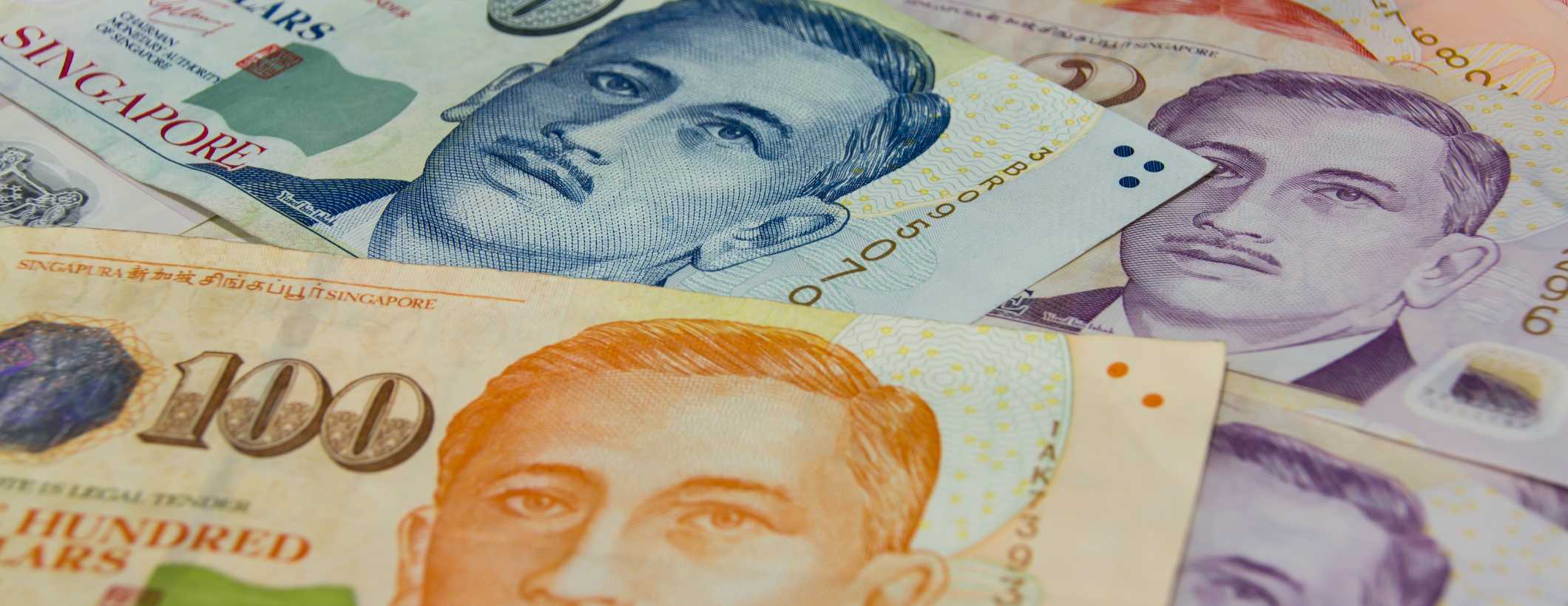

Singapore’s currency is the Singapore Dollar (SGD), and visitors may need to exchange their currency for SGD to pay for goods and services. Currency exchange is widely available throughout Singapore, with options ranging from banks and money changers to hotels and airports. Checking the exchange rates to ensure a fair deal is important when exchanging currency. Rates can vary depending on the location and the service provider, so comparing rates across different providers is recommended before making a transaction.
Many banks in Singapore offer currency exchange services with competitive rates and various currencies. Money changers are also popular, particularly in Chinatown and Little India, where many money changer shops offer various currencies at competitive rates.
Hotels and airports also offer currency exchange services, but rates may be less favorable than other providers. It is recommended to check the rates before exchanging money at these locations to ensure you get a fair deal. You have many options for exchanging currency, with various providers offering competitive rates and convenient locations throughout the city-state. It is recommended to compare rates and check exchange rates before making a transaction to ensure you get a fair deal.
ATM withdrawals


Singapore has a widespread network of ATMs, making it easy for visitors to withdraw cash from their accounts. Most ATMs in Singapore accept international bank cards, including Visa, Mastercard, and Maestro.
When withdrawing cash, it is important to note that most banks charge a fee for foreign card transactions. These fees can vary depending on the bank and the type of account but typically range from 2-3% of the total withdrawal amount. Some banks may impose a minimum withdrawal amount, typically around $10 to $20.
Despite the fees, withdrawing cash from ATMs in Singapore is still a convenient and secure way to access money. Visitors should consider withdrawing larger amounts of cash to minimize the impact of the fees, and to avoid making multiple transactions that can add up to significant fees over time.
Some of the best banks in Singapore to take cash from include DBS Bank, OCBC Bank, and UOB Bank. These banks have a wide network of ATMs throughout the city-state, making it easy to access cash from almost anywhere in Singapore. Visitors should also check with their own banks before traveling to Singapore to confirm the fees and charges for foreign card transactions.
Credit cards


Singapore is a modern and developed city-state that widely accepts credit cards for payments. You can use foreign credit cards in most establishments, including restaurants, hotels, and retail stores. However, it is important to check with your bank before traveling to Singapore to ensure your card will work and avoid surprises.
When using foreign credit cards in Singapore, visitors may encounter foreign transaction fees ranging from 2-3% of the total transaction amount. It is recommended to check with your bank to understand the fees associated with using your credit card in Singapore and using a credit card with no foreign transaction fees to minimize costs.
Regarding accepted credit cards, Visa and Mastercard are widely accepted in Singapore, followed by American Express and Diners Club. However, carrying a backup credit card or cash is recommended, as some establishments may only accept certain types of credit cards or may experience technical issues with card transactions.
Tipping


Tipping is not a common practice in Singapore and is not expected in most situations. This is because most restaurants and hotels in Singapore include a service charge in the bill, which typically ranges from 10% to 15%. This service charge is meant to cover the service cost and is distributed among the staff.
It is generally unnecessary if you wish to tip in Singapore, but it is appreciated. This is particularly true for exceptional service or when you have received special attention or assistance. A small tip of around 5% to 10% of the total bill is considered appropriate in these cases.
It is worth noting that tipping is not expected in other service industries in Singapore, such as taxis, hairdressers, or spa services. However, rounding up the fare or bill to the nearest dollar is common and appreciated by service staff.
While tipping is uncommon in Singapore, it is appreciated in certain situations. Visitors should be aware of the service charge included in most bills and should only tip for exceptional service or in situations where they have received special attention or assistance.
💵 Money-saving tips for Singapore


- Visit during the low season: Plan your trip between July and October when hotel rates, flight fares, and attraction ticket prices are typically lower due to reduced tourist crowds.
- Choose budget accommodation: Instead of staying in luxury hotels, opt for budget-friendly options like hostels, Airbnb rentals, or capsule hotels to save on lodging expenses.
- Eat at hawker centres: Savor delicious and affordable meals at hawker centres instead of dining at expensive restaurants. You’ll get to try a variety of local dishes without breaking the bank.
- Use public transport: The MRT system and buses are efficient, clean, and affordable. Purchase an EZ-Link card or a Singapore Tourist Pass for unlimited travel on public transport, which can help you save significantly on transportation costs.
- Take advantage of free attractions: Explore free or low-cost attractions like the Singapore Botanic Gardens, the ArtScience Museum’s public spaces, or the National Gallery Singapore.
- Look for bundle deals: Save money by purchasing attraction bundles or city passes that offer discounted access to multiple attractions, such as the Singapore City Pass or the iVenture Card.
- Shop at local markets: Instead of shopping at high-end malls, explore local markets like Bugis Street, Little India, or Chinatown, where you can find affordable souvenirs and clothes.
- Attend free events: Singapore hosts various free events throughout the year, including cultural performances, concerts, and art exhibitions. Check local event calendars to find free happenings during your visit.
- Visit parks and beaches: Enjoy nature at no cost by spending time in parks, nature reserves, or beaches like East Coast Park, MacRitchie Reservoir, or Sentosa Island’s Palawan Beach.
- Utilize free walking tours: Take advantage of free walking tours provided by volunteer groups or organizations like Singapore Footprints, which offer informative and engaging guided tours of the city’s landmarks.
- Refill your water bottle: Singapore’s tap water is safe to drink. Carry a refillable water bottle to avoid purchasing bottled water and save money.
- Enjoy happy hour deals: If you want to experience Singapore’s nightlife, look for bars and restaurants offering happy hour promotions, which typically include discounted drinks and food items.
- Travel with a group: Share expenses like accommodation and taxi fares by traveling with a group of friends or family members. Additionally, group discounts may be available for certain attractions.
- Leverage student or senior discounts: If you’re a student or a senior citizen, carry your ID to avail discounts at various attractions, museums, and cultural sites.
- Use cashback and rewards apps: Download apps like ShopBack or Fave, which offer cashback and discounts on various services like dining, shopping, and attractions. This can help you save money throughout your trip.
📱 Useful Singapore travel apps


- gothere.sg: This comprehensive travel app helps you navigate Singapore with ease, providing accurate directions for public transport, driving, or walking. It includes information on MRT and bus routes, fare estimates, and travel times.
- Grab: Singapore’s most popular ride-hailing app, Grab, offers various transportation options, including taxis, private cars, and shared rides. The app also provides food delivery and mobile payment services.
- MyTransport.SG: Developed by the Land Transport Authority (LTA), this app provides real-time public transportation information, including MRT and bus arrival times, traffic updates, and parking availability.
- Chope: Chope is a popular restaurant reservation app in Singapore. It allows you to discover new dining spots, book tables, and access exclusive promotions and discounts at a wide range of eateries.
- Burpple: This food discovery app lets you explore Singapore’s culinary scene with ease. Browse user reviews, curated lists of must-try dishes, and exclusive deals to find the best dining options within your budget.
- iChangi: The official app of Singapore’s Changi Airport, iChangi provides flight information, airport facilities, shopping and dining options, and even exclusive promotions. Use it to navigate the airport and make the most of your time there.
- Visit Singapore Travel Guide: This official travel app by the Singapore Tourism Board offers personalized recommendations, insider tips, and curated itineraries to help you plan and make the most of your trip to Singapore.
- SG Buses: This user-friendly app provides real-time information on bus arrival times, routes, and bus stop locations. It also includes fare calculations, making it easy to plan your bus journeys in Singapore.
- Klook: Klook is an all-in-one travel app that helps you discover and book attractions, tours, and activities in Singapore at discounted prices. It also offers exclusive deals and promotions, helping you save money on your trip.
- Trail Wallet: While not specific to Singapore, this travel expense tracker app helps you monitor your spending and stick to your budget during your trip. You can enter your expenses in various currencies, including the Singapore Dollar, and the app automatically converts and organizes them for you.
🈲 Helpful phrases for Singapore travel


English is an official language in Singapore so you really don’t have to know Singaporean phrases for traveling to Singapore. They also have various languages which makes Singapore language learning more complicated. However, if you just want to sound like a local, below are some helpful phrases for Singapore travel:
- Hello – “Hello” or “Hi” (English is widely spoken in Singapore)
- Thank you – “Terima kasih” (Malay) / “Xièxiè” (Mandarin) / “Nandri” (Tamil)
- Excuse me – “Permisi” (Malay) / “Qǐng wèn” (Mandarin) / “Mannikka vendum” (Tamil)
- Please – “Sila” (Malay) / “Qǐng” (Mandarin) / “Dayavu seythu” (Tamil)
- Yes – “Ya” (Malay) / “Shì de” (Mandarin) / “Aamam” (Tamil)
- No – “Tidak” (Malay) / “Bù shì” (Mandarin) / “Illai” (Tamil)
- Where is the MRT station? – “Di mana stesen MRT?” (Malay) / “Dìtiězhàn zài nǎlǐ?” (Mandarin) / “MRT nilaiyam engu?” (Tamil)
- How much does it cost? – “Berapa harganya?” (Malay) / “Zhè ge duōshǎo qián?” (Mandarin) / “Idhu evvalavu?” (Tamil)
- Can I have the bill, please? – “Boleh saya minta bil?” (Malay) / “Qǐng gěi wǒ zhàngdān” (Mandarin) / “Billai thara mudiyuma?” (Tamil)
- Where can I find a taxi? – “Di mana saya boleh dapat teksi?” (Malay) / “Zài nǎlǐ kěyǐ zhǎo dǎochē?” (Mandarin) / “Taxi engu kidaikkum?” (Tamil)
- Can you help me? – “Boleh tolong saya?” (Malay) / “Nǐ néng bāngzhù wǒ ma?” (Mandarin) / “Enakku udhavi seivīrkala?” (Tamil)
- Where is the restroom? – “Di mana tandas?” (Malay) / “Xǐshǒujiān zài nǎlǐ?” (Mandarin) / “Kakkoos engu?” (Tamil)
- I am lost. Can you help me? – “Saya sesat. Boleh tolong saya?” (Malay) / “Wǒ mílùle. Nǐ néng bāngzhù wǒ ma?” (Mandarin) / “Enakku vazhi theriyala. Udhavi seivīrkala?” (Tamil)
- Is it spicy? – “Pedas?” (Malay) / “Là ma?” (Mandarin) / “Idhu kaarama?” (Tamil)
- Goodbye – “Selamat tinggal” (Malay) / “Zàijiàn” (Mandarin) / “Poitu varēn” (Tamil)


